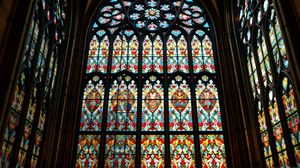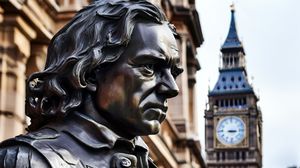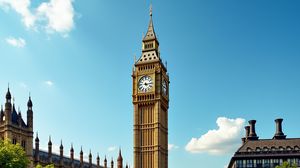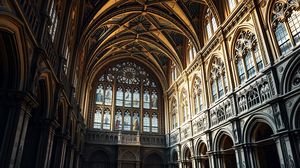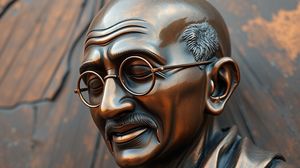
The Mahatma Gandhi Statue in Parliament Square is a striking bronze tribute that stands as a testament to the iconic Indian leader's enduring legacy. Unveiled in 2015, it is one of the nine statues in the square, which prominently features other notable figures from world history. Notably, the statue's placement in this key location is symbolic of the peaceful ties between India and the UK, paying homage to Gandhi's influence on civil rights movements globally.
Created by British sculptor Philip Jackson, the statue depicts Gandhi in his characteristic dhoti, a simple traditional Indian garment, which marks a profound visual representation of his commitment to simplicity and his philosophy of non-violence. The choice of attire and posture ensures that the statue remains relatable and reflective of Gandhi's humble nature and profound impact on Indian society and the world.
Interestingly, the statue was inspired by a famous photograph of Gandhi at 10 Downing Street in 1931, capturing the essence of his visit to London for the Round Table Conference. This moment in history is encapsulated in the sculpture, bridging time by connecting Gandhi's past visits to his enduring presence in the city's cultural landscape.
Though Gandhi never lived in the UK, his philosophy and activism have had a significant impact, influencing pivotal figures like Martin Luther King Jr. and Nelson Mandela in their respective struggles for civil rights. Hence, his statue stands not just as an honor to him, but as a reminder of the universality of his teachings on peace and equality.
Located amid the grandeur of historical Westminster buildings, the Gandhi statue adds a thoughtful dimension to the surrounding environment traditionally associated with Britain's political operations. Its presence invites contemplation on the historic dialogues between power and peace across the years.

Making the Most of Your Visit:
Treat yourself to a quiet moment with the statue. While Parliament Square can be quite bustling, taking a few moments to quietly reflect on Gandhi's teachings as you stand before the statue is worth it. You might find a new appreciation for his role in championing non-violence.
Keep an eye out for the intricate details. Philip Jackson, the sculptor, has managed to capture Gandhi's serene expression beautifully. Also, notice the textile detailing on the dhoti; it's quite impressive in its realism.
Combine your visit with a look at the other statues. Figures like Winston Churchill, Nelson Mandela, and Abraham Lincoln share the space. Each statue tells its own story, and together they offer a comprehensive view of leaders who shaped the world.
Visit at different times of the day if you can. The changing light alters the mood around the statue and the Square. It's particularly striking during early morning or late afternoon when the lighting softens and highlights different features of the sculpture.
Think about the location's symbolic significance. Reflect on why Gandhi is placed among these other historical figures in the heart of London's political district. This can lead to interesting thoughts on the dialogue between British and Indian history.

Visiting Times & Costs:
The Mahatma Gandhi Statue in Parliament Square is open to the public at all times, as it is located in an outdoor public space. Visitors can access the statue freely at any time of the year, without any entrance fees.
As for accessibility, Parliament Square is generally accessible to individuals with mobility impairments. The surrounding area is largely flat with paved paths, though care should be taken due to potential crowds and the general outdoor environment.

Address & Map:

Nearby:





